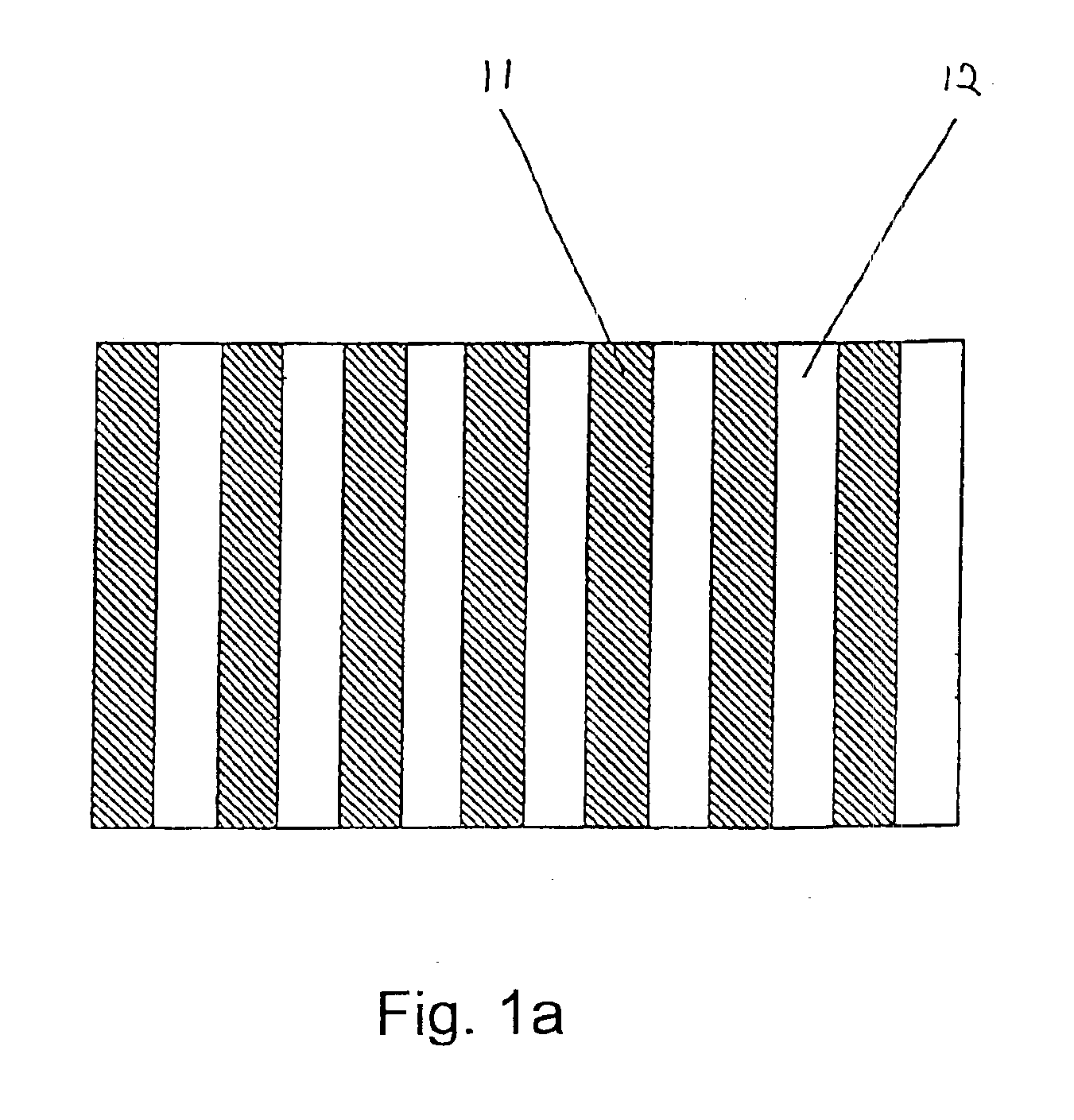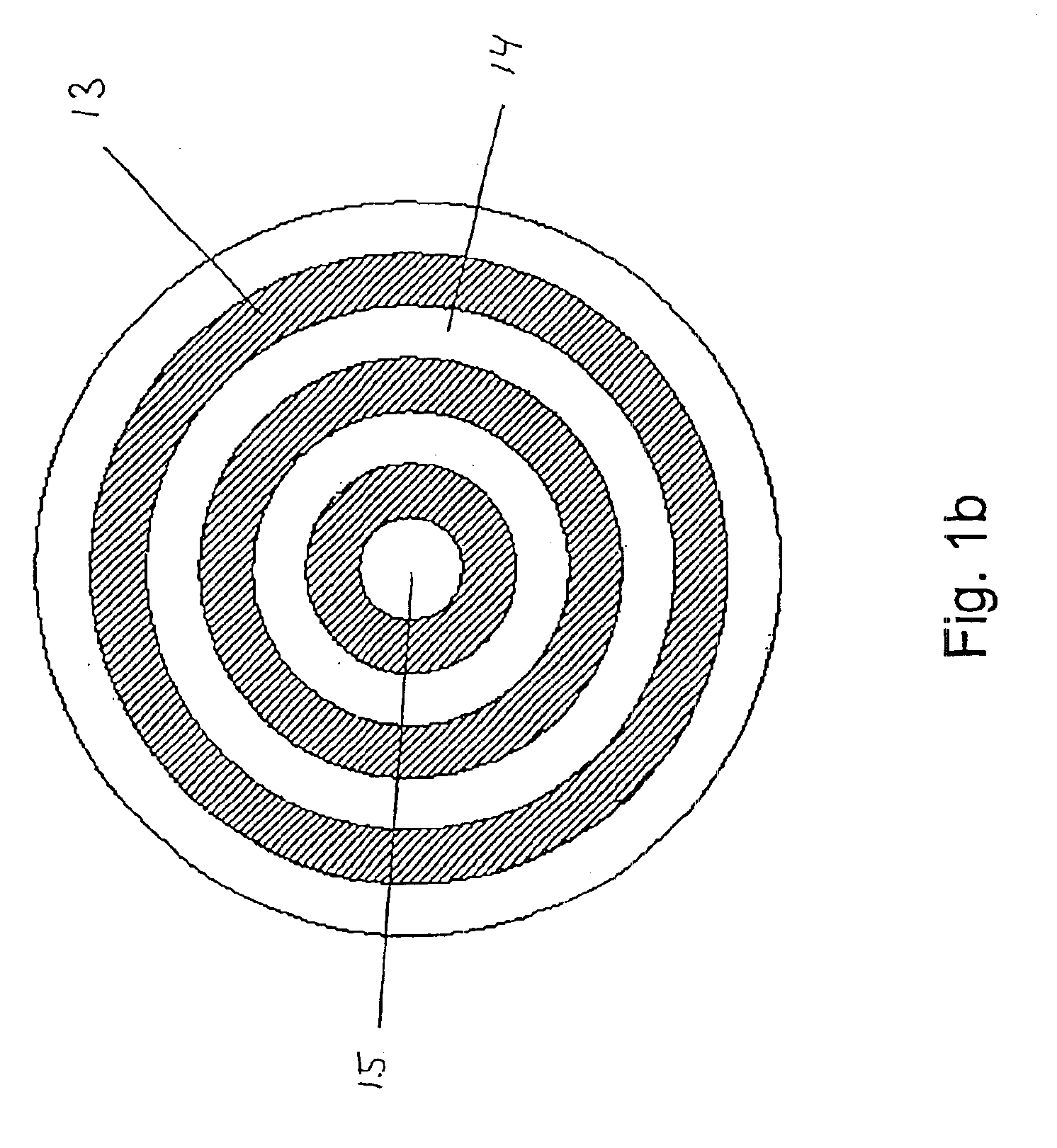Micro-structured optical fiber
a micro-structured, optical fiber technology, applied in the field of optical fibers, can solve the problems of reducing the efficiency of optical communication systems, unable to achieve significantly larger index contrasts in traditional fibre production processes, and waveguides with undoped cores with slightly lower refractive indexes, etc., to achieve strong positive group velocity dispersion, reduce coupling losses, and reduce the effect of coupling loss
- Summary
- Abstract
- Description
- Claims
- Application Information
AI Technical Summary
Benefits of technology
Problems solved by technology
Method used
Image
Examples
Embodiment Construction
[0096]In the proceeding text, the invention will be described by way of example using selected preferred embodiments.
[0097]In the prior art, one-dimensional Bragg stacks as schematically shown in FIG. 1A, are known to exhibit photonic bandgaps. The Bragg stack consist of alternating layers of high index material (11) and low index material (12). Light incident directly on the stack is reflected completely by the Bragg-stack if the thickness of each layer corresponds to a quarter of a wavelength of the light. Such a Bragg stack is typically referred to as a dielectric mirror (since in principle all light is reflected), or it is termed a quarter wave stack. The wavelengths intervals, in which light is reflected are termed the photonic bandgaps of the Bragg stack at normal incidence.
[0098]Often Bragg stacks are designed for normal incidence, since the light will then not propagate in the invariant direction of the crystal. However, it is recognised that photonic bandgaps also exist for...
PUM
| Property | Measurement | Unit |
|---|---|---|
| Length | aaaaa | aaaaa |
| Length | aaaaa | aaaaa |
| Length | aaaaa | aaaaa |
Abstract
Description
Claims
Application Information
 Login to View More
Login to View More - R&D
- Intellectual Property
- Life Sciences
- Materials
- Tech Scout
- Unparalleled Data Quality
- Higher Quality Content
- 60% Fewer Hallucinations
Browse by: Latest US Patents, China's latest patents, Technical Efficacy Thesaurus, Application Domain, Technology Topic, Popular Technical Reports.
© 2025 PatSnap. All rights reserved.Legal|Privacy policy|Modern Slavery Act Transparency Statement|Sitemap|About US| Contact US: help@patsnap.com



